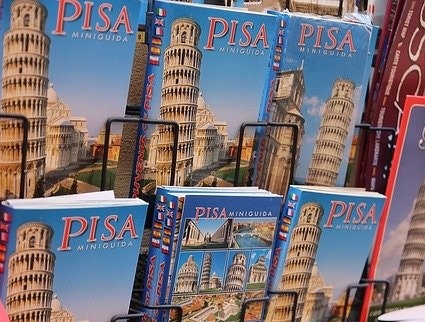
Reading What’s Real: 11 Types of Nonfiction
READING WHAT’S REAL: 11 TYPES OF NONFICTION
If you had to guess, which book category would you suppose is the largest in the United States, by both volume and sales revenue? Would you guess Romance? Mystery?
It’s actually neither! In fact, it’s not any genre of novel. Believe it or not, according to NPD Booskscan, it’s actually nonfiction.
Nonfiction, by definition, is prose writing that is about real facts, people, and events. Does that sound boring? It shouldn’t. We live in a fascinating world and nonfiction books can teach us about any wonderous part of it that piques our interest.
It is true that once upon a time nonfiction books tended to be very dry and straightforward. While the information was great, the reading could be a trudge. Thankfully, though, nonfiction has come a long way in recent years and has really embraced storytelling and diversity.
Take a look at these 11 cool types of nonfiction that you’ll want to add to your library–and possibly even your writing repertoire!.
11 Types of Nonfiction
1. Traditional

Traditional nonfiction takes on a topic and seeks to educate us on it. It doesn’t necessarily get fancy but gives us the lowdown on a moment in history, an animal, a style of architecture, or any other topic.
Examples:
- “A People’s History of the United States” by Howard Zinn
- “The Wines of Portugal” by Richard Mayson
- “Architecture: A Visual History” by Jonathan Glancey
2. Autobiography
An autobiography is the story of a person’s life, written by that very person (sometimes with the help of a ghostwriter). It is typically written in the first person and covers the author’s life chronologically. In most cases, autobiographies cover the life of someone famous.
Examples:
- “The Autobiography of Benjamin Franklin” by Benjamin Franklin
- “Long Walk to Freedom” by Nelson Mandela
- “I Know Why the Caged Bird Sings” by Maya Angelou
3. Biography
A biography is much like an autobiography, but with one major difference: It’s written by someone other than the subject. So, instead of someone telling you their own life story, you have a writer telling you the life story of someone famous or significant. These books will typically be written in the third person and also tell their story chronologically.
Examples:
- “Titan: The Life of John. D. Rockefeller Sr.” by Ron Chernow
- “Mercury: An Intimate Biography of Freddie Mercury” by Leslie-Ann Jones
- “Alexander Hamilton” by Ron Chernow
4. Memoir
A memoir is a story of a person's life told by that same person. Wait, isn't that an autobiography? Yes and no. There are some distinct differences. A memoir is more likely to be focused on one event, time period, or aspect of the author's life. Memoirs also tend to be emotionally driven rather than simply reporting the events. A great memoir can read much like a good novel.

Examples:
- “Eat, Pray, Love” by Elizabeth Gilbert
- “Angela’s Ashes” by Frank McCourt
- “Under the Tuscan Sun” by Frances Mayes
5. Expository
Expository nonfiction does just what the name implies: It exposes something or brings something to light. Some possible topics would include political, cultural, or environmental issues. The key to great expository nonfiction is for the author to have a deep knowledge of the subject matter and bring to light things that most people would not already know.
Examples:
- “What Sank the World’s Biggest Ship?: And Other Questions About the Titanic” by Mary Kay Carson
- “Loot: The Battle over the Stolen Treasures of the Ancient World” by Sharon Waxman
- “Bottle of Lies” by Katherine Eban
6. Prescriptive Nonfiction (Self-Help)
Need help figuring out a problem in your life? Prescriptive nonfiction may have the answers. Better known as self-help books, prescriptive nonfiction offers aid, coaching, and advice for people looking to improve their lives in one way or another. It could be about weight loss, self-confidence, leadership, or any other popular subject. This vein of nonfiction has a massive market, and is unlikely to go away anytime soon.
Examples:
- “The 7 Habits of Highly Effective People” by Stephen R. Covey
- “Who Moved My Cheese” by Spencer Johnson, M.D.
- “Men are From Mars, Women are From Venus” John Gray
7. Narrative

This is a category than can actually include almost any of the other categories as well. Narrative nonfiction is any nonfiction writing that uses a storytelling style to convey the information. Rather than simply reporting the facts, narrative nonfiction frames the information dramatically, but still truthfully.
Examples:
- “Galileo’s Daughter” by Dava Sobel
- “In Cold Blood” by Truman Capote
- “Friday Night Lights” by Buzz Bissinger
8. Browsable
Browsable nonfiction is informational nonfiction broken down into small, easy-to-read chapters, with things like lists and fun facts. The topics can be anything from how to play a sport to farm machines or former U.S. presidents. A reader can open up the book at any point and glean fun and interesting information without having to read the book from cover to cover.
Examples:
- “Discovery Channel Sharkopedia: The Complete Guide to Everything Shark” by Discovery Channel
- “The Ultimate Guide to Pro Basketball Teams” by Nate LeBoutillier
- “Digging for Tyrannosaurus rex: A Discovery Timeline” by Thomas R. Holtz Jr.
9. Active
Want to learn how to do something? Get a book that teaches you with a step-by-step process. That’s active nonfiction. Active nonfiction is meant to educate the reader on how to do something new. It could be building a treehouse, cooking scrumptious desserts, or creating entertaining party games for kids. The “active” in active fiction comes from the idea that the reader doesn’t just read, but needs to follow the instructions and do what the book is telling them to do.
Examples:
- “The Klutz Book of Paper Airplanes” by Doug Stillinger
- “How to Cook Everything Vegetarian” by Mark Bittman
- “Do it Yourself: Step by step Credit Repair” by Anthony Robinson
10. Academic Texts
Most of us are familiar with academic texts. These books are used in educational settings and teach students about any one particular subject, usually including quizzes or other assignments in them. They should be authoritative and comprehensive.
Example:
- “American History, Combined Edition: 1492 – Present” by Thomas S. Kidd
- “The Making of a Poem: A Norton Anthology of Poetic Forms” by EavanBoland and Mark Strand
- “Essentials of Geology” by Stephen Marshak
11. Travel Guides and Travelogues
Travel guides are just what they sound like, guides for traveling to a specific location. They can provide a traveler with information on the coolest landmarks, best restaurants, places to stay, and other tips to make the most of a trip. Travelogues do the same thing, but in a more creative way. A travelogue is told from the perspective of a person who takes the trip and provides a first-person account of the destination.

Examples:
- “50 States, 5,000 Ideas” by Joe Yogerst
- “Fodor’s Essential Japan” by Fodor’s Travel Guides
- “New Europe” by Michael Palin
Nonfiction is Always Evolving
One thing remains constant: Nonfiction is about facts and the truth. How we choose to tell it is an ever-evolving thing. Fifty years ago, if you put a memoir to film, you’d probably end up with a documentary–and that’s okay.
However, more recently, memoirs like “Eat, Pray, Love” and “Under the Tuscan Sun” have all the storytelling, plot, and voice to make wonderful feature films.
If you’ve shelved the idea of reading—or even writing—nonfiction because it’s just too dull for your tastes, it may be time to look again. It’s a new world in nonfiction and chances are there’s something out there that will keep you turning the pages. Enjoy!
Related Content
- 2 Comments
Subscribe to Newsletter
- How Can SharePoint Be Used To Organize and Disseminate SOPs?
- Planning the Perfect Genealogy Research Trip: A Step-by-Step Guide
- From Silly to Awesome: How Words Change Meaning Over Time
- The Psychology of Font Choice: How Typography Impacts Content Engagement
- How to Distribute SOPs for Maximum Usability






2 thoughts on “Reading What’s Real: 11 Types of Nonfiction”
Actually, the reverse is the case for me: I consider fiction boring(a waste of time) and nonfiction exciting and productive. I would rather spend my time reading a 700-page Chicago manual of style than any of, say, J.K Rolling’s or even Ernest Hemingway’s.
We can definitely appreciate a good nonfiction book, as well! Glad to hear we aren’t the only ones.